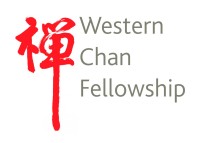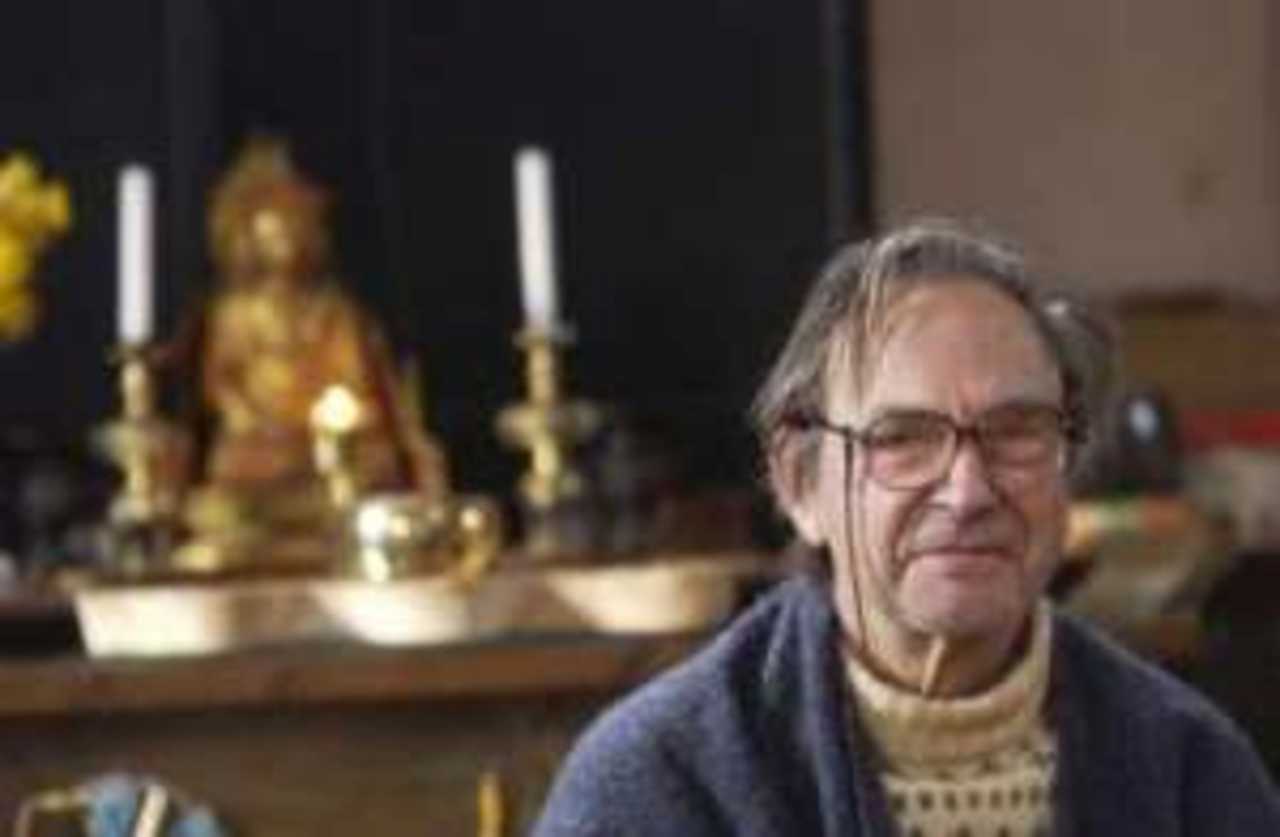Empty Midnight
From the start of our training we will have been confronted by the classical definition of Chan "A special transmission outside the scriptures, no dependence on words and letters, Direct seeing into the human heart." But if words and reading are not allowed how on earth can one start and indeed continue any practice of Chan as a beginner. Further more, any visit to bookshops reveals a mammoth collection of books and articles describing Chan and its methods. So why this extraordinary contradiction? Certainly, anyone trying to study what Buddhism is does need some systematic approach. I have described this as a four point series of stages:
- Knowledge – reading something introductory about the key 'formulae' of the Buddha, Chan stories.
- Experience – actually experiencing difficulty and success in Zazen (Chan meditation) and realising that there are states of mind that differ from the everyday.
- Integration – starting to perceive the way knowledge is confirmed by experience and experience is understood through theory.
- Understanding – the comprehension of the spiritual meaning of practice and knowledge.
Indeed anyone wishing to uncover the nature of Buddhist wisdom and walk the Bodhisattva path needs to develop this fundamental understanding that comes ‘gradually’ through time and focus. But, as we have seen, Chan challenges all this. Indeed great masters such as Linchi1 and Bassui2 in differing centuries have maintained that any academic study, theorising, wordy debating are all totally useless and indeed irrelevant to uncovering the essential insight that depends on direct experience. Even time is irrelevant, since the only reality is a present moment. Yet, what is that since 'now' has always just passed by?
When one has spent some time investigating the practicality of zazen one discovers that certain experiences arise within a practice in which the everyday mind of intentionality and search is sustained. One can ‘achieve’ certain goals by deliberate practice and these changes do occur in a series. Thus the deliberate practice of samatha- Calming the mind through breath control, or other yogic methods, or intense and extended focus on a paradoxical question (a hua tou) can bring the mind into a mode of consciousness marked by tranquillity, a feeling of ease in which the everyday awareness of one's self is none the less sustained. I call this mode 'Tranquillity' or 'Self at Ease'. During such experiences further changes in awareness may arise, for example a feeling of love of life or being – a Disinterested Love without desire but very vivid, blissful or touched with gratitude and emptiness. These experiences disappear when the mind begins to think about them with either positive or negative evaluation and in any case they gradually fade or change into one another for a while. The Japanese refer to these as 'makyo' or illusions because they are not at all enlightenment. None the less, they are a sign of effective zazen practice.
Sooner or later, the practitioner may perhaps have a quite different sort of experience that throws light on the mysterious “ special transmission”. The mind changes its state from its own side without either intentionality or egoic will being involved. Suddenly one is present in a quite different realm that is extremely difficult to describe because it is literally beyond words. In this state, the self is ‘forgotten’, as Shifu puts it. The mind now has a quality of Mirroring: as if in a mirror, all experience is simply reflected as it is and without judgement. Yet that mirror is clearly in being as a bare awareness itself, a condition that is a delight without words. Yet, immediately the mind attempts to describe it in any way it ceases and 'I' am again the central pivot rather than the mirror. I call this ‘Clarity’ and it is the gate opening towards enlightenment. Actually, as Linchi and Bassui both remark, anyone who has not had this direct experience cannot understand what one who has had it is talking about: hence the 'special transmission' when a Master acknowledges it in another.
Clarity is then the gate opening a path that goes ‘all the way’. It may arise at any time when a mysterious silence falls on the mind, ego is forgotten in the oncoming delight and the mirror appears. There is absolutely nothing the ego, you, can do about it. As Reb Anderson once remarked, “ You cannot do it!” It arises from its own side when something is ready. Certainly, meditative practice may facilitate its appearance since it often arises on or after a retreat. Often a slight shock to a one-pointed mind can initiate it and this may occur at anytime. There is no possible prediction and no wanting has any effect.
Much more rarely and under similar conditions one may suddenly experience a complete absence of ego intention or comment – not just ‘forgotten’ but, as Shifu remarks, totally 'absent' and the experience is recognised by an awareness of that absence - afterwards. This experience is 'Seeing the Nature', the fundamental basis of mind when all the activities (skandhas) that create karmic concerns based in a self have gone. It is followed, as is Clarity, by profound ‘silence’ and a wonder that may perhaps explode in joy.
These states cannot be attained by any motivation rooted in self-interest. Since nearly all our daily concerns are based in time-anchored karma (conditioning) the beginner may find the whole thing deeply frustrating and may indeed wish to give up Chan altogether. While this is indeed understandable, it would be a sad mistake. What can the beginner do?
The answer is "Have Faith!" But what sort of faith is this. Clearly, it is not of the Christian type depending on the kindness of a deity. This is a Faith in Being itself, Life itself, a confidence that one is on a path that may show you your ‘true’ nature at some time when it, not you, decides. This Faith is similar to the Disinterested Love we have already mentioned. It can then be found by deliberate practice with a letting go of self-judgments in the everyday. It requires an attitude framed by Shifu as ‘Everyday is a Good day’ or by Shenryu Suzuki as 'Beginner’s mind'. One discovers it through good will in all circumstances (whatever), openess in practice, freshness of spirit, gratitude and kindness to others.
Sometimes a visualisation can help one along to Tranquillity. Visualisation uses mental pictures as models of yogin practice. This is quite a common practice as both Linchi and Bassui again demonstrate. One I have been using lately is the following hua tou:
Deserted city square, midnight.
Full moon shining
Footsteps!
For me the ‘deserted city square’ is a mental place where I find myself. It is empty of others, silent, it is midnight. Only I am there. The full moon is my state of zazen - silently illuminating. The Footsteps are startling – even slightly alarming .The question arises “What is this?” or “What is it?”
This is where a discipline is vital. I do not allow any answer to arise but continue one pointedly gazing into the state of enquiry itself – the “What is it?” without seeking any answer. This is what Doubt or Great Doubt means in Zen speak. After a while, I usually find a smile appearing on my face. Tranquillity is there. Clearly there is no way “I” can shift Tranquillity into Clarity as an act of ego or will. Yet, this is enough to maintain Faith in the beauty of Being and the validity of practice. Anyway, who knows what may happen next?
Now I am not suggesting that you should use this Hua tou as a visualisation in this way. Although of course, you may like to try it. You may however like to seek a simple visualisation that works for you in a similar way. We are all different, so probe your own fantasy and see what elicits a one-pointed fascination that can become a basis for a practice.
If you feel this is helpful – try it. If not – then proceed with your own most valued method.
1 Yoshio Miyakoshi 1991 Zen: the record of Zen Master Rinzai in Ninth Century China. Private publication. Or any translations of this well known master.
2 Braverman,A.1989 Mud and Water. A collection of talks by the Zen Master Bassui . North Point Press. San Francisco.
3 This has been presented in one or two of our Koan retreats and was used by several people as a hua tou not as visualisation in Gaia House recently.
Chuan-deng Jing-di
John Crook
- Publication date:
- Modified date:
- Categories: 2010 Teishos John Crook John Crook
-
 Western Chan Fellowship CIO
Western Chan Fellowship CIO - Link to this page
Back

©Western Chan Fellowship CIO 1997-2025. May not be quoted for commercial purposes. Anyone wishing to quote for non-commercial purposes may seek permission from the WCF Secretary.
The articles on this website have been submitted by various authors. The views expressed do not necessarily represent the views of the Western Chan Fellowship.
Permalink: https://w-c-f.org/Q372-65



